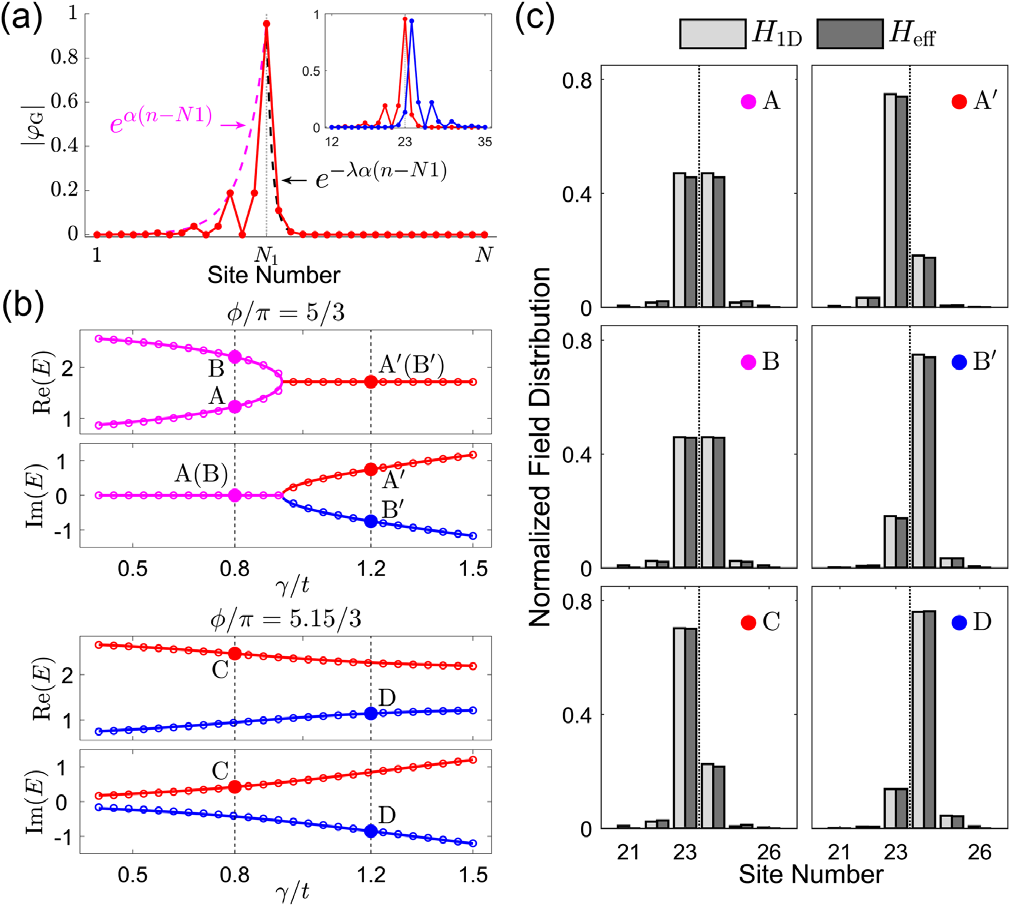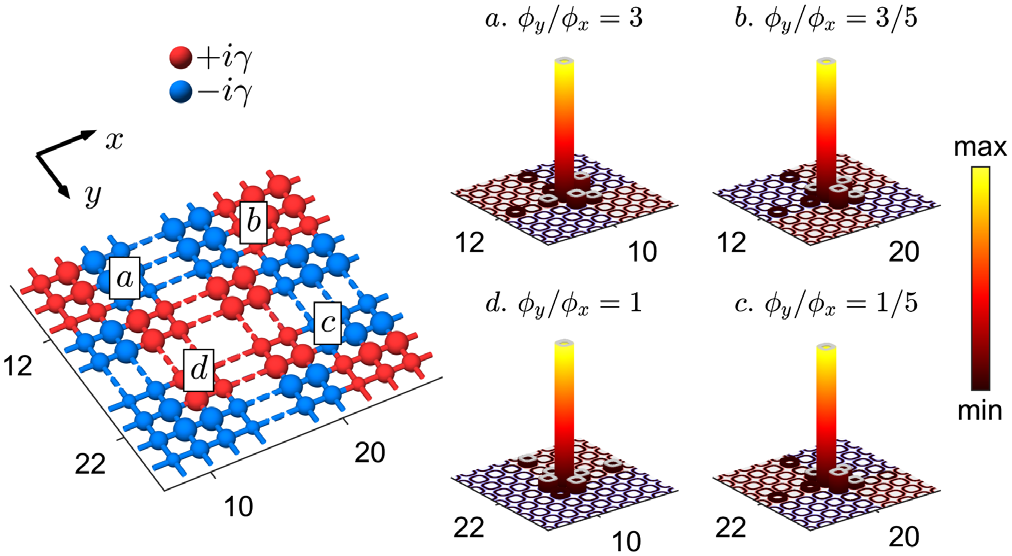Effective Hamiltonian for Photonic Topological Insulator with Non-Hermitian Domain Walls
来源: 作者: 发布时间:2022-10-14
Prof. Cuicui Lu from the Physics School, Beijing Institute of Technology, cooperating with Prof. Xiaoyong Hu and Prof. Qihuang Gong from Peking University, and Prof. C. T. Chan from Hong Kong University of Science and Technology, proposed a method to construct effective Hamiltonians to describe photonic topological insulators with non-Hermitian domain walls and revealed gain-loss domain walls induced topological states. The work was published in Physical Review Letters.
Compared with Hermitian systems, the non-Hermitian topological photonic systems have complex physics. Since most of the open systems in the real world are non-Hermitian systems, the study of non-Hermitian topological photonics systems is of great value in many aspects, such as fundamental research, frontier research, and applications. In general, if the topologically non-trivial and trivial domains are joined together, topological edge states will appear on the interface of the two domain walls. The number of topological states equals to the difference between the corresponding topological invariants. The topological invariants can be obtained by band analysis of the corresponding systems. Previous research shows that there are localized topological edge states in the domain walls when increasing the gain/loss difference between the two domains, even if the two topological equivalence domains join together. This topological state cannot be expressed by the topological invariants. Due to the lack of translational symmetry of the system, it is difficult to study the non-Hermitian system of domain walls.
In order to provide general knowledge, the authors studied a variety of common non-Hermitian topological photonics systems, including the Aubry-Andre-Harper (AAH) model, Su-Schrieffer-Heeger (SSH) model, valley photonic crystal, and C6v photonic crystal. They proposed a new method to construct the effective Hamiltonian by introducing coupling coefficients between different domain topological states. It provides a more general scheme for the study of novel gain-loss domain wall topological photonic systems. In the one-dimensional AAH configuration described by the tight-binding Hamiltonian H_1D, the fitting method is used to determine the relevant parameters of the effective Hamiltonian H_eff. Theoretical calculation shows that the effective Hamiltonian H_eff can accurately describe the mode distribution and mode frequency of the corresponding topological states (Fig. 1). At the same time, they developed the method to achieve high dimension through constructing a cross at the gain-loss interface in the two-dimensional AAH configuration. The topological corner state induced by the gain-loss domain wall is also realized, and the developed effective Hamiltonian is successfully constructed to analyze the corresponding physical phenomena. Through adjusting the gain-loss distribution and the parameters of the system, topological corner states can be induced at different locations within the two-dimensional system (Fig. 2). This work reveals the generation mechanism of topological states induced by gain-loss domain walls and provides advanced methods for manipulation of non-Hermitian topological states in photonic systems.

Fig. 1 (a) Schematic plot of constructing φ. (b) Comparison of eigenvalues and (c) normalized field distributions of domain-induced edge states given by H_1D and H_eff.

Fig. 2 A multidomain wall configuration and typical density plots at each domain corner.
Prof. Cuicui Lu from Beijing Institute of Technology, Prof. Xiaoyong Hu from Peking University, and Prof. C. T. Chan from Hongkong University of Science and Technology are co-corresponding authors of the paper. This work was mainly supported by the National Key Research and Development Program, the National Natural Science Foundation of China, and Beijing Institute of Technology Fund Program for Teli Young Fellows, and RGC Hong Kong and AoE/P-502/20.
Paper information:
Yandong Li, Chongxiao Fan, Xiaoyong Hu,* Yutian Ao, Cuicui Lu*, C. T. Chan,* Dante M. Kennes, and Qihuang Gong, Effective Hamiltonian for Photonic Topological Insulator with Non-Hermitian Domain Walls, Physical Review Letters 129, 053903 (2022).
The paper link:https://link.aps.org/doi/10.1103/PhysRevLett.129.053903




